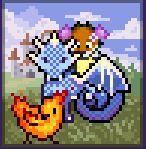Hiya!
I am so pleased to mention there were 550+ authors participating in the Clarion Write-A-Thon, and together we raised over $22,000! Thank you so much for sponsoring me and for helping fund this workshop! The Clarion Write-A-Thon is over, but the workshop offers donations year-round. I encourage you to support Clarion West!
My goal was six Italian fairy tale retellings and I was able to write four on top of regular freelancing. I had a great time with the workshop; I managed to revisit my productivity style and goals. What I’ve learned is that I need to go back to word count as my primary metric. I was going by project, but that doesn’t work for me anymore. Sometimes, I’ll write a small thing and call it a day if I have revisions to do, too–and right now I’m focused on productivity. I can’t sleep my way through this pandemic, because I can’t afford to. Instead, I’m going to focus on raw word count on top of whatever revisions I’m going through during the day, too.
Part of my challenge has been: “How do I keep up with blogging and writing?” I don’t know the answer to this right now, but I’ve set a goal of two posts per week–including this one.
I’m dealing with a lot of unknowns right now. The only certainty is my To Do list and whatever form that takes. I have decided to complete the Italian fairy tale retelling project on my own schedule and did add that to the list. So, on to the next To Do!
Other Clarion Write-A-Thon Posts
- Week Zero: Outlining the Project
- Week One: Brainstorming and Selection
- Week One: More on Catarina the Wise
- Week Two: Getting More Out of Habitica
- Week Two: Draft Done! On to Liombruno
About this Post: In exchange for sponsor support, I promised to highlight how I’m processing my identity as an Italian-American and daughter of an immigrant through brainstorming, story selection, and first drafts. If you’re keen on following my progress, warts and all, I encourage you to sign up for my newsletter. Clarion will be taking donations even though the Write-A-Thon has ended.

